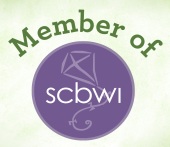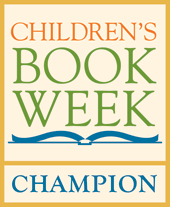On Thursday, YA organizations and social media were buzzing about the New York Times best-seller list.
The short version of what happened: A new teen novel, “Handbook for Mortals,” came out of the blue to bump “The Hate U Give” out of the No. 1 spot on the New York Times young adult best-sellers list. Thanks to some Twitter sleuths, it was discovered the book essentially gamed the system to get on the list, allegedly by having unknown persons call bookstores that report to the NYT and place bulk orders. Meanwhile, print copies of the books were nowhere to be found on major book retailer shelves and were unavailable on Amazon. (You can read more in Entertainment Weekly’s stories about the situation here and here.)
When the New York Times was alerted to the devious path the book took toward the No. 1 spot, the newspaper revised the list and removed “Handbook,” instead pushing “The Hate U Give” back to its 26th week in the top spot.
The drama continued Friday when sharp-eyed write Rick Capone spotted less-than-original cover art and shared it on Twitter.

The dust (mostly) settled by the weekend, and the YA literary universe moved on to other conversations.
But what does this situation mean to the average reader?
The New York Times best-seller serves two great purposes for readers: (1) It measures the top-selling young adult books so we know what others are reading and (2) it’s a list for those looking for fresh reading material. As a reader, I love knowing what others are reading, and I’m fascinated to see what books rise in popularity. Even though I don’t always love the books the majority picks (I’m looking at you, “Twilight” …), it’s fascinating to see the public’s vote for favorite reading material.
Which is why I was rubbed the wrong way when “Handbook” used the system to push its way to the top. It didn’t claim No. 1 by readers buying the book but instead by one or more individuals making deliberate bulk orders. That’s duping the public into believing there’s massive readership for the novel. I’m not naive enough to believe this has never happened in the past on some small scale, and there are likely other ways to influence the NYT list that are beyond my understanding. But I was still disappointed by whoever decided to singlehandedly push “Handbook” into the top slot.
My initial reaction was to resent “Handbook,” I don’t think the proper route is to boycott novel — there’s a good chance the author had nothing to do with the phone calls hunting for NYT-reporting bookstores, and it would pain me to see a writer’s work damaged by scandal that had no direct link to him/her.
Nor do I think the appropriate route is to track it down and read it in light of the publicity it received last week. The cover art still raises questions, and I’m reluctant to give a sale to any publishing firm that would plagiarize another creator’s intellectual property. Not to mention the book hasn’t earned my attention through reviews or a plot synopsis I can’t resist.
So my plan is to put “Handbook” out of my mind for now. My action is to not act in regard to that title.
Instead, if the NYT list debacle irked you as a reader (as it did me), consider reading one of this week’s YA best-sellers. In light of last week’s ruckus, I ordered a copy of “The Hate U Give.” After all, it’s spent 25 weeks so far in the top spot, and the reviews are bursting with praise. It’s a novel that climbed to the top through its merit as a reader favorite and tackling a tough topic in fiction, where young readers can relate and/or empathize.
This week’s top 10 New York Times best-selling YA hardcovers are:
- The Hate U Give, by Angie Thomas
- One of Us is Lying, by Karen M. McManus
- Lord of Shadows, by Cassandra Clare
- Once and For All, by Sarah Dessen
- Miles Morales: Spider-Man, by Jason Reynolds
- This is Where It Ends, by Marieke Nijkamp
- Crazy House, by James Patterson
- Alex and Eliza, by Melissa de la Cruz
- The Last Magician, by Lisa Maxwell
- The Sun is Also a Star, by Nicola Yoon



I find I often distrust what the New York Times Bestselling list is. Often these books are pushed because of political agenda, an author’s racial background, or idealogical views. For example, A Thousand Years of Solitude. My mom recently read it and she found it to be crude, disturbing, and frankly, all around unappealing. And sadly, this has been the case with many books on the list. However, there are also some books that in the past have deserved the spot i.e. Harry Potter and other children’s books of the same wavelength. Anyhoo, these are just my thoughts on the subject.
LikeLike
Thanks forr sharing
LikeLike